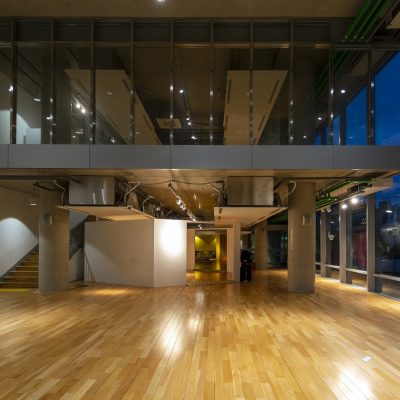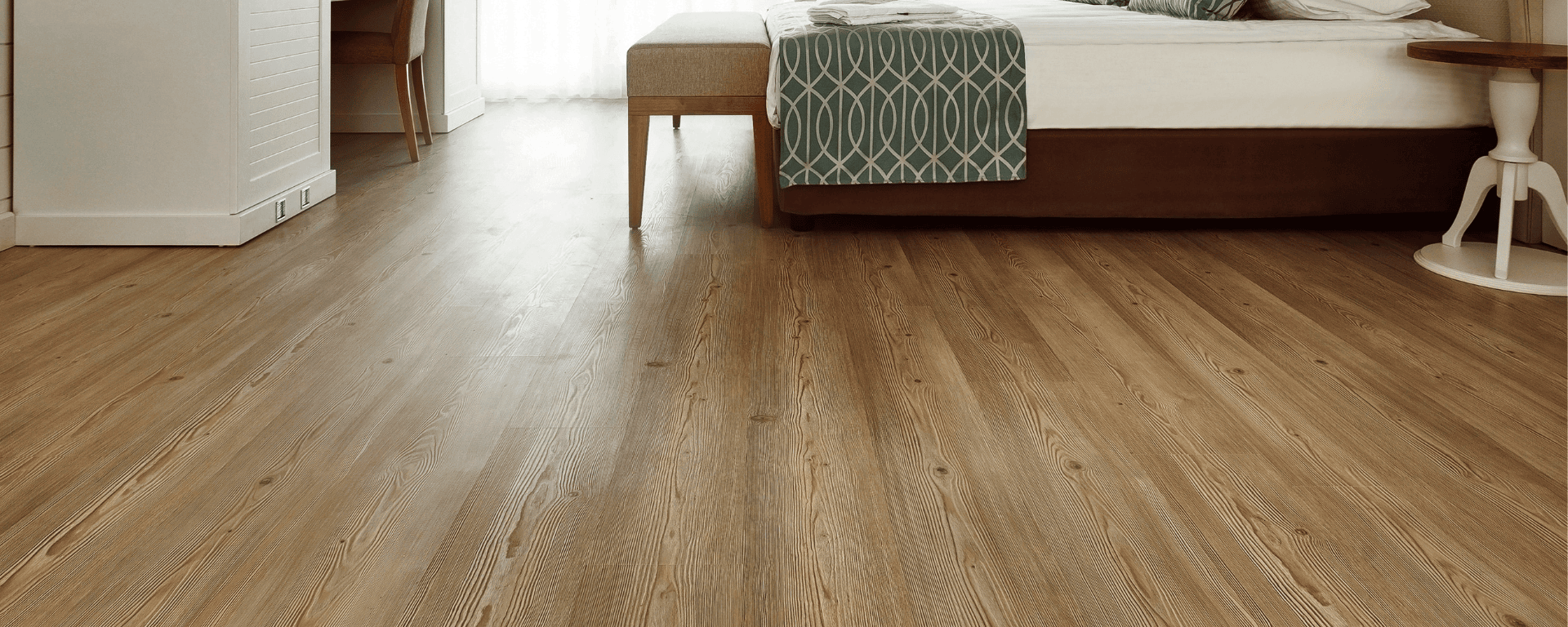If you’re designing or renovating a home or commercial space, flooring will be an important aspect of the design process. From tile to carpet to hardwood, each and every flooring type has a knack for completely transforming the look of your space.
With that in mind, let’s look into how SPC flooring can potentially enter and take center stage in your design process. We’ll look into how it’s best defined, the benefits it can bring, and the disadvantages it can deliver.
Not only that, but we’ll also provide the best tips to install this type of flooring yourself. That’s right! SPC flooring can be installed solo, and we’re going to tell you how.
Read on to see why SPC flooring just might be your perfect interior decorating fit!
WHAT IS SPC FLOORING?
SPC flooring actually stands for Stone Plastic Composite or Stone Polymer Composite. This type of flooring is known for having an extra sturdy and durable rigid core for luxury vinyl flooring.
More specifically, this means that you can install SPC flooring on virtually any level and on nearly any type of subfloor. It’s also perfect for handling large amounts of foot traffic, which may just be the perfect selling point for a high traffic business in need of a flooring facelift.
This type of flooring is produced with the following high-quality features and benefits.
THERE’S A SPECIFIC WEAR LAYER
Similar to the use of traditional vinyl. The wear layer is meant to protect your floors from any dents or scratches.
The layer is thicker, then it can be more resilient to any potential damage and offers a solid level of protection. It’s important to have this damage-resistant layer in vinyl flooring. Otherwise, it won’t have the level of durability it’s known for providing.
THERE’S ALSO A PRINTED VINYL LAYER
This is the layer that people can see when they’re looking at the floor after installation. The particular layer displays an image that replicates the appearance of other materials.
It’s also known for being one of the highest quality vinyl available for sale to the public.

SPC AND WPC CORE
Now, here’s the good stuff! The main reason customers opt for this type of flooring is usually because the core is waterproof. This means that there’s no chance of damage to the hardwood when liquid enters the picture.
There’s no peeling or rippling, and the planks won’t swell from holding moisture. This is what helps make the flooring so durable after it’s installed in the home.
DON’T FORGET THE BACKING LAYER
The backing layer— this is what holds the planks together. It also adds to the overall sturdiness and durability of the hardwood.
THE BENEFITS OF SPC FLOORING
Now that we know what SPC flooring is, let’s take a peek at the benefits it gives if you were to install it in your own home. From being resistant to moisture to needing minimal maintenance, this amazing flooring option may just prove to be a perfect fit!
The benefits of SPC flooring include:
· Fits the needs of most individuals with varying budgets
· Easy to clean
· Minimal maintenance
· Provides a series of styling choices (Cement, stone, wood, etc.)
· Self-installation is possible
· Can be placed on the majority of subfloors (Laminate, tile, granite, cement, etc.)
· Antistatic
· 100% resistant to moisture
· Built-in commercial-grade wear layer
· Fire resistant
· No evidence of harmful chemicals
· Low requirement for subfloor
· High abrasion resistances
With so many pros, it’s kind of difficult to choose your favorite, isn’t it?
WHAT IS A COMMERCIAL GRADE WEAR LAYER?
As mentioned earlier in one of the above features, having a wear layer is key in the structure of vinyl flooring. And when it’s commercial-grade, it’s a total game-changer.
To go into even further detail, the wear layer is the top surface layer that provides the real durability to the overall floor. Visually it’s normally clear, and is urethane-based, so it can sustain the original appearance and provide secure and efficient maintenance.
Wear layers may also range in size too. Normally, they can be measured from 4 to 40 mil, meaning it’s in thousandths of an inch. When deciding on the thickness of the wear layer, keep in mind that the thicker it is, the better protection it serves. Commercial vinyl flooring will most likely require the top layer to be at least 20 mil.
WHAT ARE THE POSSIBLE DISADVANTAGES?
With every type of flooring, you must consider the possibility of all the potential cons associated with your specific choice. Take a look below to see if any of these pose a potential deal-breaker for you in your home:
· If the flooring happens to be glued down, it will be difficult to remove
· If not careful, the flooring may be punctured by sharp objects
· Some vinyl can sustain marks and scratches from heavy furniture placed on top
· This flooring is not biodegradable
· If there is a certain area in the house with heavy sunlight, fading and discoloration may occur over time
It’s always good to see both sides.
HOW ARE THESE SPC FLOORS INSTALLED?
SPC flooring seems right for you, then follow along for a complete guide on how to install it in your home or office. In 10 simple steps, you’ll have the flooring you desire and the look you’re craving!
1. START WITH YOUR FIRST PLANK
Begin with taking the first plank and use a 3/8” spacer to place it up against the wall. Select the wall that is most visible upon entering the room.
2. THEN MOVE ONTO THE SECOND PLANK
Now, you can take the second plank and carefully place it tightly next to the first one. This pattern will continue.
3. MAKE SURE TO FOLD DOWN THE PANELS
After they’re next to each other, fold down the panel in one swift movement. Then press down until you hear the planks click together. There shouldn’t be too much force needed.
4. INSTALL SPACERS
Once you hit the end of the wall, put a spacer of 3/8” in thickness against the wall. Make sure to measure the space to ensure the last plank will fit.
5. CUT THE FLOORING USING A JIGSAW
Cut the piece to fit using a jigsaw. Make sure the plank is face down when cutting to reduce the appearance of any damage.
6. MOVE ONTO THE SECOND ROW
As you move onto the second row, keep the length of the planks at a minimum of 10”.
7. KEEP GENERAL DISTANCES
Minimum distances of the short ends should not be less than 6”.
8. MANEUVER THE SECOND PLANK FOR THE SECOND ROW
Repeat steps 1, 2, and 3 as you move onto other rows.
9. ADJUST AS NEEDED
Every room is different. Pivot as needed until you get to the last row.
10. FINALLY, FOCUS ON THE LAST ROW
When you get to the last row, make sure the minimum width is no thicker than 2” wide. Remember the distance of the wall is also 3/8”.
OUR FINAL THOUGHTS
Do you think that SPC flooring will seamlessly fit into your unique interior style? With the many benefits it provides and the different color options you can select, we find that it offers quite unique benefits to your space.
And the best part— you’re able to install it yourself with no problems! By following these simple steps and grabbing a helping hand (or two), you’ll be able to set yourself up for success without the need to hire a professional team.
However, this type of flooring isn’t for everyone. If SPC flooring isn’t for you, that’s completely ok! Home and business renovations are personal, and therefore, the selections associated with them should be treated in the same capacity. So, choose the flooring that that is right for you and your project and make sure it’s one that you’ll love for years to come!
If you need any questions just comment to me I’ll help you.

